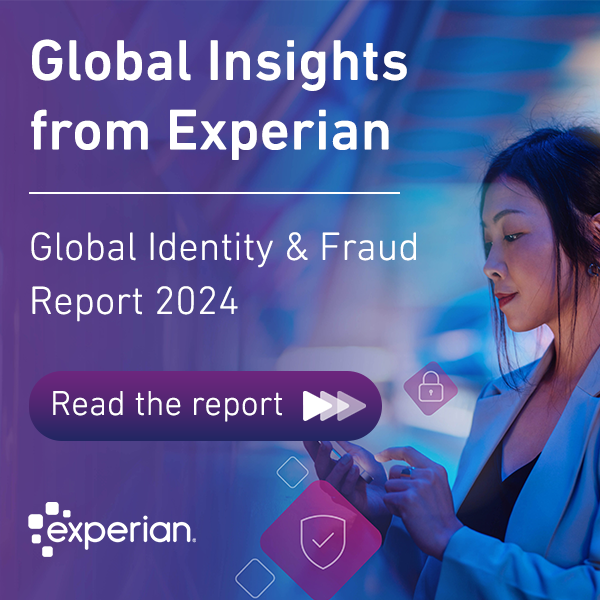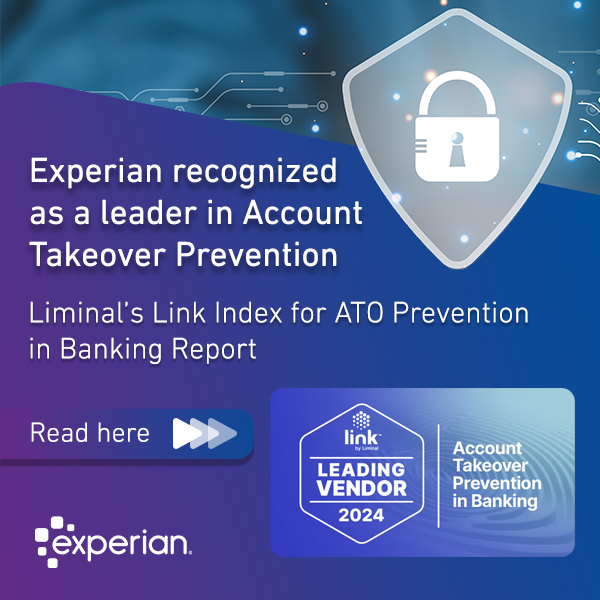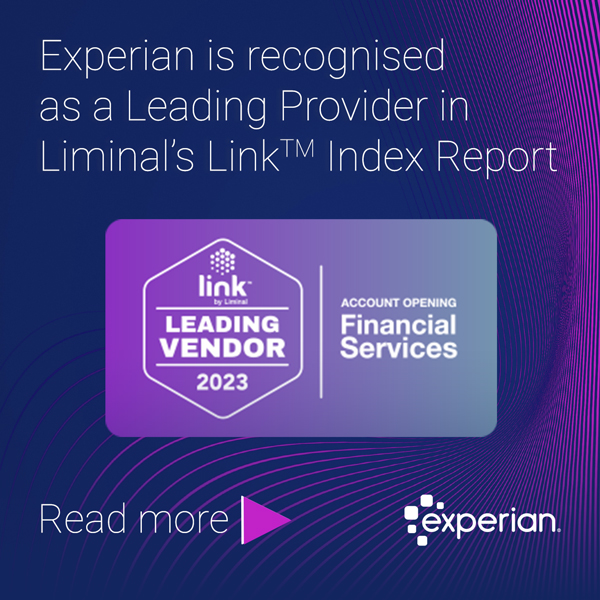Tech Today
We explore what businesses are doing today in the application of available data, advanced analytics and innovative technologies.
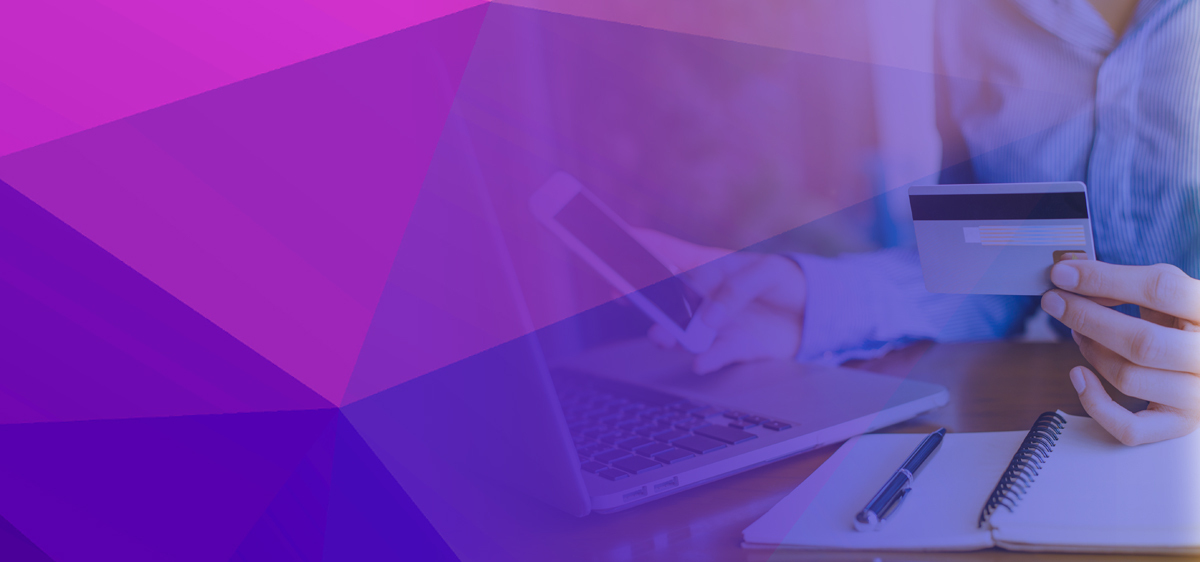
The first of a two-part series on our Insights in Action podcast, Nick Maynard, Juniper Research, and David Britton, our VP of Industry Solutions for Global Decision Analytics, discuss the latest developments around online payment fraud, and what the implications look like for consumers and businesses. Following the publication of the latest report on online payment fraud from Juniper Research, this episode takes a closer look at how the mobile revolution has created both opportunities and risks when it comes to online payment. "We're seeing a massive digitalization of existing payment methods and retail, which is being driven for a number of reasons. Convenience is a massive driver, and mobile wallets in particular offer a very convenient solution for payments, and they're being used very widely around the world. Other drivers include the ongoing Coronavirus pandemic, which is having a role in driving the increased usage of the online channel."Nick Maynard, Juniper Research Topics covered in part 1 include: The online payment revolution has been led by mobile, with half of the world’s population estimated to use mobile wallets in the next four years. How this transformation is shaping the new online payment experience. Covid-19 has pushed organizations to prioritize their digital transformation. We look at what the implications will be as a result of the rush to digital. With higher convenience, normally comes a higher risk of fraud – what we can expect to see as a part of this shift to mobile. What businesses can do in the short term to mitigate those rising types of fraud, and what their key operational and strategic considerations should be for the future. Listen to the full podcast here, and look out for what’s new in online payment fraud Part 2: How AI and evolving regulation are driving change

Recently we commissioned Forrester Research to look into senior executives’ perceptions on key business data challenges and the importance of achieving a holistic view of their customers. This research uncovered that nearly a third of business leaders worldwide say they don't have enough data to get the insights they need or that the quality of the data they have access to is poor. While getting the type, quality, and amount of data right is paramount to success in your endeavors to create actionable insights that take your business to the next level, data alone is not enough. To get value from data, there's a whole ecosystem that needs to be in place that enables the business to create, manage and maintain a holistic view of the customer, create analytically driven insights into those customers, and deploy them into production environments that drive optimal customer actions and journeys. Organizations also have the opportunity to explore new data assets from traditional sources or those dynamically created in a myriad of places across mobile devices and the Internet of Things. There must be systems and procedures in place to continuously improve and assess these new data sources, by bringing them into analytical processes where insights are derived and predictive models generated. The critical task is then to seamlessly ingest and embed the data and models into production environments in a robust and compliant way. And that's got to be a continuous process. Otherwise, businesses will stagnate, and they will lose out to those competitors who are actively doing this. Addressing the lack of data your business needs to get actionable insights: Three practical steps Prior to even considering external or additional data sources, you need to get a solid understanding of the data you currently have access to within your organization, what value those data sets bring in and what are the gaps to be filled. You should also review your internal processes and technology stack to understand if further IT investment is required to create a more effective ecosystem. With the right tools and processes, you must be able to easily assess the uplift of new data sources in your analytics environment, as well as ingest those new data sources into production environments, to drive new models, run segmentation rules, and execute customer-centric actions. What are the three steps you need to take to get enough data to gain business insight you can take action on? Look at the quality of your internal data. We see a number of organizations that have powerful data in their own business but don't leverage it as well as they could. So matching data together, making sure that they've got a really, really strong view of that customer across all of their systems is really essential. And then having processes ongoing to make sure that they maintain that view whenever they touch the customer, whether it's through an online channel or face-to-face, so that they always know who that customer is, and they can match them to their existing relationship profile. Getting your internal data process correct is a foundational element to this whole piece. Understanding the value and role of new data. In terms of new data, it’s about understanding if that new data can actually add value to the business rather than plugging it into core systems straight away. You need to work with the vendor or the source of that data to get hold of a dataset, match it to your customers, and run analytical processes to identify whether the data adds value. If it does, consider what models or segmentations could you create from that data that'll actually drive value in the business.Identify the software and architectures you have in place that allow you to connect to data and drive that data into a tool that can dynamically apply models and rules in a heavily regulated environment. With the right toolset forming the bridge between your off-line analytics environment and your on-line production environment, you can leverage predictive data to continuously improve your customer-centric decisoning across the lifecycle for all of your portfolios.

The opportunistic nature of hackers means that a global crisis can create the perfect breeding ground for fraudulent activity, meaning businesses and consumers need to be even more vigilant. View Infographic

There’s a digital payments revolution, and mobile is leading the charge. But at what cost does convenience come? Juniper Research’s latest online payment fraud report explores key issues around increased cybercrime and what that means for businesses looking to invest in fraud prevention. View infographic
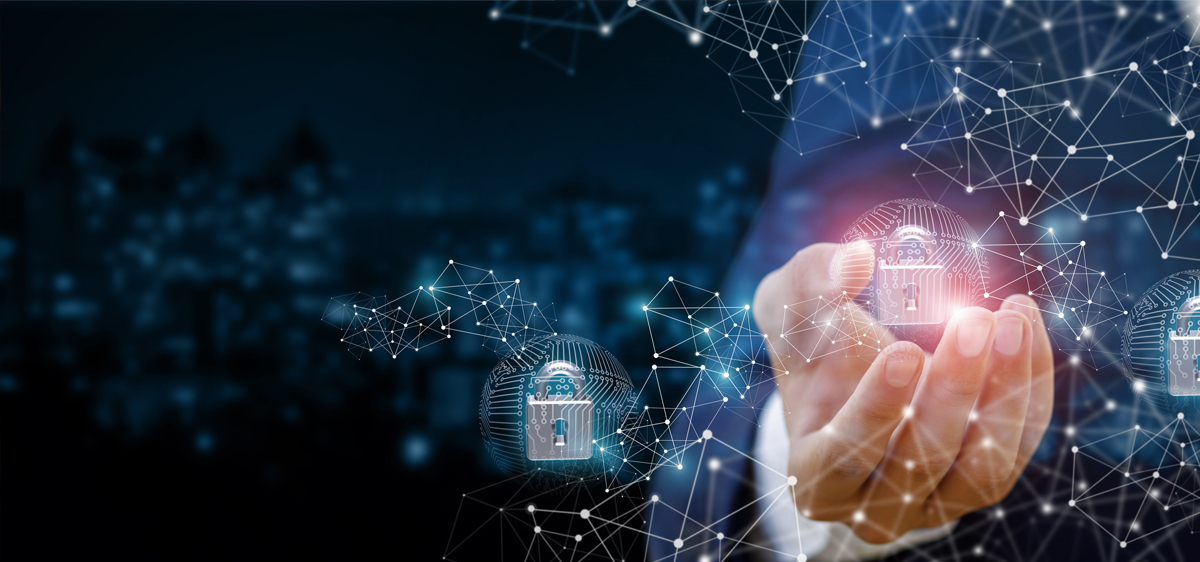
The interesting thing about fraud is that it’s always changing. Fraudsters are getting smarter, and fraud threats are constantly evolving. Businesses need to be agile and prepared to quickly shift their fraud strategies to stay a step ahead of emerging fraud threats. Traditionally, it's been very difficult for businesses to keep up – every time they see a shift, new fraud signals must be employed, which means looking at new intelligence signals in order to counter that fraud and then moving through a process of procurement and qualification, and then implementation and integration, of fraud services in order to manage the change. With time of the essence, businesses can no longer wait months to react. They need to be able to react in real-time. Biggest threats for 2020 Covid-19 has accelerated online payment transactions, making way for massive cyber security and data fraud concerns among banks and retailers. The idea of doing more digital business, picking up customers digitally, providing a great digital experience is going to be more and more important as we move through the pandemic. Even businesses which traditionally see most of their customer traffic through bricks and mortar might start to see that shift. All of this means that there is more opportunity for fraudsters to be part of the process and to take advantage of that digital interaction. The risk of fraud is going to increase as more people go digital – In part because of sheer numbers, and in part because more of the people who are going online now maybe doing so for the first time. So companies and consumers alike are less prepared for that kind of interaction. Account opening is likely to drop because of Covid-19, but we should expect to see a sharp increase in account take over fraud. There are a lot of people who are being forced to go online now to transact. They may need to turn to ecommerce. They may need to look at online banking to move their banking online. But the point is, they may never have gone online to perform these tasks before. Many vendors have been rapidly rolling out new technology solutions to help banks and retailers manage this new online demand, which has potentially exacerbated digital fragmentation, privacy concerns, and governance expectations. The importance of continuous risking and self-service The speed at which fraudsters adapt to new technology and behavior has always been a problem, but now that we are seeing sudden and unpredictable change, reacting at speed with new fraud strategies has never been more important for businesses. Typically, businesses need to move through validation, contract and then integration in order to do this – making for a long and tedious (not to mention expensive) process. The new release of CrossCore will pre-qualify fraud and intelligence services so that they are pre-integrated meaning that businesses can choose how they want their transactions to be processed, which fraud and identity services they want to use, and they can do so through simple self-service. There is also a feedback loop where reports are generated on how much fraud was detected. Businesses can access their feedback loop almost in real-time and see if their fraud strategies are working or not, and then adjust things as they go. Customer experience when all of your customers are online The ability to passively and strongly identify a customer is a difficult balance to strike when the goal is not to inconvenience the user. And now that most consumers are running their lives online, they demand not only a secure experience, but a convenient one too. To achieve this, a lot of signals about that person are collected. These range from device characteristics and who it is registered with, to behavior on the device and whether these signals match up to the same person. In order to process this data, the signal streams that come in must be considered and then almost in real-time, fraud analytics allow a decision to be made on whether the interaction is with a genuine person or a fraudster. To be able to reduce friction while passively and strongly identifying a person, advanced analytics becomes integral. More about how our latest upgrades can help your business
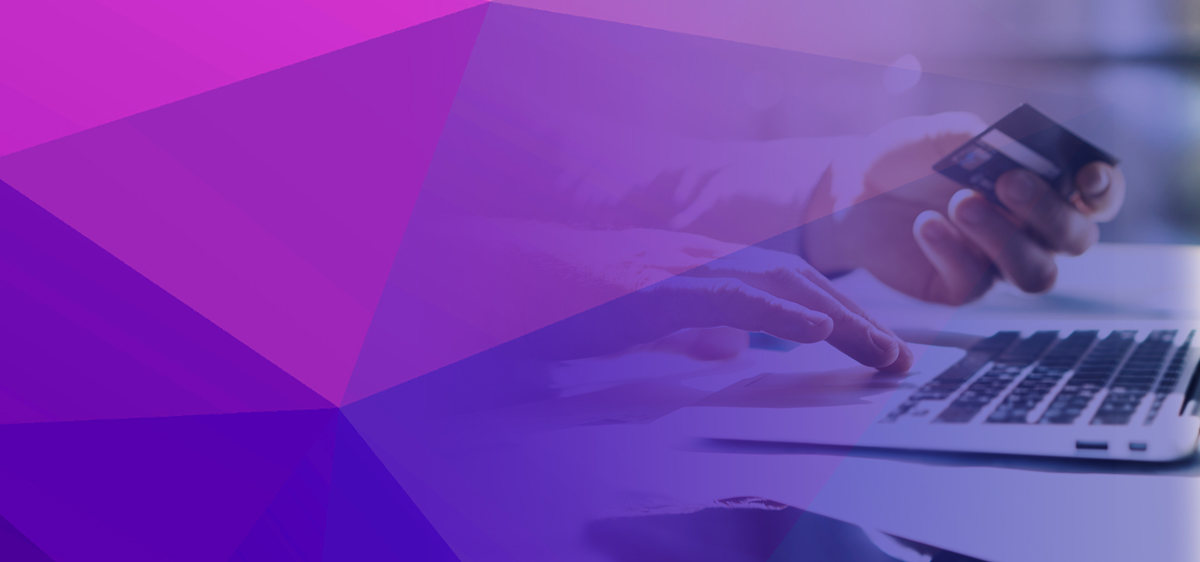
In a report made available this month, Juniper Research anticipates that in 2024, remote purchases for digital and physical goods will exceed 285 billion transactions per annum; an 80% increase on the figure for 2019. And, that values will increase by nearly 60% to over $9 trillion. It’s impossible to look at these numbers without considering the impact of the massive migration to digital channels that businesses and their customers made to stay engaged during the early response to Covid-19. Finding ways to support customers and their needs remotely has been met with a lot of creative solutions and we see new trends taking hold. For example, “buy online and pick up in-store” and “buy now and pay later” provides customers the access they need for goods and services now with a lot of conveniences. Convenience is a significant part of the customer experience but unfortunately can expose a business to a lot of fraud. According to David Britton, “Fraudsters will always be at the forefront of technology exploitation.” There is evidence of this not only in technological innovation but in the manipulation of human behavior, otherwise known as social engineering. According to Juniper, new technologies such as artificial intelligence will take social engineering to unseen levels of success, like the rise we're seeing in fictitious or synthetic identities. But while it might seem like an impossible problem to manage, businesses have solutions available to them to prevent fraud, including using AI against cybercriminals. In fact, Experian believes that there the layered approach to fraud detection and prevention can significantly protect businesses, and their customers, throughout the credit lifecycle, and withstand the changing face of fraud. Check out the report on key trends and capabilities required for securing digital payments and find out more about Experian's solution on the Juniper Research Leaderboard. Related content: Protect your family from potential fraud when kids are playing video games Getting to grips with the shifting fraud landscape

Depending on location, social distancing has been in full effect for 8-9 weeks and it’s taken its toll on parents juggling work, school and keeping kids busy. Many parents have eased up on video gaming restrictions as way to let their kids and teens to connect with friends outside of remote learning classroom activities. According to Verizon, video game-related streaming was up 75% in the first week of quarantine and has experienced double-digit increases over typical day figures pre-Covid. Bloomberg reported that Italy’s largest telecommunications company, Telecom Italia, had a 70% increase in Internet traffic, due in large part to streaming video games. The uptick in video game usage means not only an increase in kids’ screen time but greater fraud risks as younger gamers are especially vulnerable to hackers. Anywhere there’s transferable value, there’s a high potential for fraud to occur. Many of the traditional fraud methods we’ve seen in other payment types also apply to video game accounts, such as stolen credentials to open new accounts or unauthorized purchases made using an existing account. Gaming fraud also has unique features like compromising another players’ account to use their resources, whether it’s virtual money, like v-bucks or star coins, or other rewards, like exclusive tools, skins, or power-ups. Unlike a bank or credit card lender, unraveling and finding the source of fraudulent behavior in video games is difficult. That’s why it’s important to be aware of the security measures that video game companies offer, what indicators to look for if you think your account has been hacked, and what more you and your kids can do to protect payment information. Many online video games use passwords, and in some cases two-factor authentication, to protect your kids’ gaming accounts. If you believe your account has been seriously compromised, there are ways to contact the software developer and remediation services are provided. But despite these security measures, there’s more that can be done. Most importantly, don’t share any personal information when talking to other players. Some gamers are also social engineers who try to gain information on the real people playing the games – whether it’s your real name, location and age or it’s details about your life, your dog’s name, where you moved from, or email address. What may seem like a harmless exchange of information could lead to a social engineering fraud attack where an account is opened using your kids (or their parents’) information to impersonate them. The information exchanged could also be sold for cash on the Dark Web, where personal information is collected and sold to career fraudsters. What businesses can do: Explore the use of behavioral biometrics to add another layer to simple password protectionsUnderstand the role device identity can play, like exposing which vulnerable accounts have been accessed by a known fraudster but where digital goods have not yet been movedReview your risk policies and consider a layered security approach that will level up or down based on the type of in-game transaction What kids can do: Talk about the game and strategy only and don’t give away any personal informationPut yourself on mute when talking to someone in the same physical room while playing games Don’t gift rewards or virtual money with anyone you don’t know in real-life What parents can do: Make sure you practice good password hygiene Turn on any additional security features offered, like two-factor authenticationScrutinize every transaction in your account history With the usage increase of tools to connect with people, there’s also a trend worth mentioning that doesn’t necessarily lead to financial loss but worth a word of warning: opportunistic disruption. Put simply, some hackers are simply trying to get into your account because they can and occasionally flash up or post inappropriate images and messages or simply push irrelevant advertising (aka click fraud). This can be especially harmful to younger gamers. The good news is that game makers seem to be aware and acting against these sorts of behaviors with increased priority and use of advanced security technologies. This same disruption has been seen in conferencing services used for schools and businesses. Whether you grew up playing the original Nintendo games or are an avid gamer family now, gaming trends among kids and adults continue to grow despite being in the throws of self-isolation. The answer isn’t to turn off the gaming system but rather be aware that online video games are also vulnerable to the fraud attacks often seen in other industries. Related stories: Q&A: Biometrics as the catalyst for trust in a socially distant world Are traditional online identification methods becoming obsolete?

The decisioning landscape is changing rapidly. In parallel to this, digital continues to redefine the customer experience with a big focus on removing friction from the customer journey. Mounting expectations around online customer experience mean that we are seeing a digital transformation both in terms of consumer interaction, and what the businesses are processing in the background. The front and back end are no longer mutually exclusive, and the driving force behind this transformation is digital, and it’s enabled by the cloud. How the pandemic has shifted priorities Before the Covid-19 pandemic took hold, businesses were well on their way to recognizing this. Digitizing more workflows while incorporating a truly customer-centric view was the goal of 2020. A Gartner report shows that in January, priorities for CIOs centered around Cloud and DevOps. This push to shorten the development lifecycle by combining software development and IT operations into a single discipline, alongside demand for Robotic Process Automation, using bots to focus on automating high volume repetitive tasks, were top of the list for businesses. By April, these priorities had changed. Businesses quickly shifted their focus to the pandemic, and with that, the need to enable remote or home working. But Cloud remains firmly within the top three. We look at why cloud-first decisioning remains critical to digital transformation, now more than ever. Why Cloud-first is even more important now Managing cash flow: When a CIO is in the cost optimization mode and trying to conserve cash, scaling back on the use of existing Cloud technology can afford immediate cost savings. Cloud cost for infrastructure of the service, or platform of the service, and even some software of the service is often tied to the business. The less usage, the more savings. When a CIO needs to implement new technologies in 2020, Cloud can offer the most cash flow optimized needs to do so. Less cash is spent upfront to acquire Cloud technology than to buy data center systems or licensed software. Business agility: Cloud technology makes it much easier to keep systems up to date and secure, alongside feature enhancements and new releases. The Cloud minimizes lengthy and costly delivery projects with solutions that can be deployed in weeks, not months and years. Customer journey: Many established market leaders are running digital transformation programs that re-orientate their business away from functional and product silos to focus on customer journeys enabled by Cloud services. Keeping it simple: Simplification is crucial. Simplifying the IT environment with Cloud services that eliminate the need to manage hardware and other infrastructure. Using Cloud-native architecture to support auto-scaling, zero downtime for upgrade. Security is paramount: The challenge to identify and fight fraud by analyzing behavior during the data capture process is ever-present. Software needs to evolve all the time to adapt to threats, and it needs to continuously update with new features to help businesses remain competitive. Businesses need to protect consumer digital accounts from Account Takeover threats while balancing consumer convenience. Cloud-first impacts all layers, from consumer interactions to data sourcing and processing, from fraud detection to identity verification, and at the heart of areas like credit and decisioning. Integrated decisioning, and decisioning that is governed and can be clearly explained to both the auditor and to the regulator is the goal of every business, and it is enabled by the cloud.

Over the past couple of months, every business, regardless of industry, has had to quickly find its bearings. This level of disruption is unprecedented; we may never see anything of this magnitude again in our lifetime. While urgent, the immediate needs created in the wake of the global pandemic shouldn’t be met with one-and-done solutions. It’s imperative that the solutions you offer not only enable your customers to manage the immediate crisis but also help you support them as they assimilate into the “new normal.” There’s therefore this added pressure for businesses to equip their teams with the necessary tools and knowledge to continue serving customers in a dynamic environment. It doesn’t take long to get left behind with new solutions, and new challenges, emerging on a regular basis. You have to keep up with the times so you can adapt your response to whatever is necessary and retain your value to your customers. How do you upskill your teams when traditional training is not an option? As Plato put it well before the Covid-19 pandemic turned our world upside down, a need or problem encourages creative efforts to overcome the challenge it presents. Recent research shows that companies that may have deferred their intended investment in training, are now resuming that commitment in order to meet new demands in this increasingly digital ecosystem: In an ILX Group survey, 51 percent of HR decision-makers said that ongoing digital learning has a direct effect on boosting employee morale, satisfaction, and longevity. A study published in the Journal of Applied Psychology found that microlearning makes learning 17 percent more effective, and Software Advice reports that microlearning engages over 50 percent of participants. A study conducted by Brandon Hall found that digital learning requires 40 to 60 percent less employee time than classroom training. The Research Institute of America reports that learning retention rates improve from 8 to 10 percent for face-to-face training to 25 to 60 percent for digital learning. IBM research found that for every dollar you invest in digital learning, the result is $30 in productivity, mostly because employees save a lot of time through online learning and are able to resume work and apply the new skills faster. Taking advantage of technology to make knowledge accessible at the point of need As with the majority of our day-to-day activities, learning solutions now must be facilitated outside of a physical environment, such as the workplace or classroom. Having access to digital knowledge and training resources gives your teams enhanced flexibility to keep their skills up to date at their own pace, whether they are at home or in the office. Over the years, we’ve seen that offering learners training in multiple formats improves the overall success of the training, including enabling greater flexibility – offering different modalities is more likely to meet learner’s preferences - work clarity and job satisfaction. While your business may still be operating in a fog of uncertainty, ensuring access to the right tools and knowledge would give your team higher confidence in their ability to be of service, minimizing business disruption during this turbulent time.

The speed at which the world is feeling the impact of Covid-19 is unparalleled. Because of this customer affordability has shifted into the unknown and businesses are trying to react quickly to assess customer risk in a brand-new context, albeit a temporary one. We look at the five key areas businesses should be considering when it comes to customer affordability. 1. Looking to insights The last financial crisis taught us that the first line of defense for many organizations, large and small, is to move straight into proactive debt restructuring to reduce the volume of customers who would otherwise fall immediately into debt collection. This crisis is no different, but identifying those in hardship, restructuring debt at speed, and in line with restricted policies are where businesses should be focusing to successfully tackle this. 2. Keeping regulators front of mind As a result of the last downturn, many financial regulators are placing a much higher weight of responsibility on lenders to make fair and transparent lending decisions when it comes to affordability. Not just when it comes to new lending, but also how they act and behave within collections. These rules are not going to be relaxed, so it’s important that businesses continue to prove that they remain compliant. 3. Predicting what’s to come Anticipating arrears before they happen, and at speed, is fundamental to managing the restructure of debt effectively. Especially where traditional data sources provide less predictive value. For businesses without advanced and automated debt restructure or collections-based program to begin with, this is an opportunity to develop something that will carry them through this time of crisis and beyond. 4. Harnessing analytics and AI Thinking predictively means getting the right analytical capabilities or models in place, ideally harnessing Machine Learning and AI to get the fastest and best results. For larger organizations, this will mean having the agility to rapidly update and deploy existing models, and for the less mature, it will mean building this from the ground up (but quickly). Businesses will undoubtedly see their analytics teams overstretched during this period, so now is the time to reduce the manual load and invest in these capabilities. 5. Automation for demand control Making sure customers can deal with organizations digitally will be critical to maintaining customer experience. It’s just as important to ensure that channels are integrated and automated in the backend. Businesses are looking to omni-channel digital solutions to help feed new demand through the funnel without having the added complication of a restricted workforce. It has never been more important to automate. More on Decision Analytics

Shifting behaviors to comply with government orders to social distance and stay at home has pushed most consumers globally to purchase online the essential items and services that they would normally buy in person. This sudden, massive shift has led businesses to prioritize the safety of their employees, customers from exposure to Covid-19 and find new ways of engaging with one another. During social isolation, biometrics may become the closest form of contact we have to the physical world. In this Q&A, I will try to address how businesses around the world are using biometrics and how consumers feel about it. How are businesses adjusting to the coronavirus ‘new normal’? Businesses are playing a direct role in slowing the spread of Covid-19 by helping customers make better and more use of digital and remote channels. They’re adjusting operations, communications and servicing to support rapidly evolving consumer behaviors, preferences and overall experience. Amidst natural fear distress that most people are feeling today, businesses are focusing a lot of time on how best to support a smooth transition to digital for all customers – ranging from digital-natives to customers that have never used digital before and were otherwise satisfied offline prior to the pandemic. The elderly need more support than ever at this dire time, and all sorts of organizations are going the extra mile to engage with them and make them feel accompanied even when they might be physically separated from their regular support networks. Financial services providers including HSBC, Barclays, Wells Fargo, Tangerine, and Santander are increasing their reliance on previously adopted voice recognition and other biometrics-based systems to speed up the ID verification process at their call centers. Similarly, other biometrics such as behavioral characteristics present in keystroke patterns and personal signatures are garnering more interest than ever before by retailers and healthcare providers to ensure secure, meaningful digital engagements with their customers. Ultimately, digital disruption is the new normal and Covid-19 has underscored the critical role that technology plays in driving value – a point that was often overshadowed by cost and unfortunately ignored until now. How is the global Covid-19 pandemic changing the way we transact? The shift to digital is also a retreat from physical and that includes physical points-of-sale, currency in the form of physical banknotes, and all other transaction mediums that contemplate physical contact as they can also potentially act as a means of spreading infection. Health authorities advise to use touchless technology where possible. This means that voice-based technology, mobile payments, digital signatures and remote account opening may become the recommended norm. Responding to this urge to go contactless, businesses of all sizes are adopting or expanding remote practices virtually overnight. Rolling contactless payment options to retail and services providers, strengthening online and mobile offerings or leaning on digital identity verification and online authentication are all part of the strategies we see being rolled out globally to fight the spread of coronavirus and to prepare for the aftermaths of the pandemic. On another note, the growing speed and sophistication of fraud related to Covid-19, as well as the rushed shift to remote working may also be adding to the general concern about transacting online, calling for heightened ways to ensure trustworthy digital experiences. What available technologies can be leveraged during and after the pandemic? Contactless credit and debit cards, mobile payments and electronic wallets, barcode and QR code readers are all known, established technologies that are gaining prominence and have the backing of health experts like the CDC. Chatbots that alleviate the heightened demand for 24/7 customer service, digital identity verification and authentication software for remote account opening and onboarding are also facilitating meaningful exchanges between consumers and organizations and helping flatten the curve of coronavirus contagions. Besides, voice and behavioral biometrics offer consumers another interface for information and services which goes beyond the confines of the screen, making it easier for certain populations to benefit from technology. What can businesses do to secure online engagements? With most transactions moving online to prevent contagion, pressure is up for businesses to create secure digital engagements. Regardless of which identity proposition is adopted by a company, now more than ever, the need to establish the verifiable claims that constitute a person’s identity is fundamental to doing business digitally. This happens at both the point of enrollment into an identity proposition and ongoing to ensure the identity hasn’t been tampered or compromised. Before the coronavirus outbreak gained the current magnitude, we launched the third annual edition of the Experian Global Identity & Fraud Report. Our research shows that creating a trusted, best-in-class customer experience is achievable with the right levels of security and reduced friction, which together provide easy access to accounts when and where the consumer wants it. Even in challenging times as the ones we are living, businesses can leverage data to build a more dynamic, less rigid approach to identity verification and customer recognition. The pandemic has boosted the growth of connected devices over the past moths, further accelerating the data generation process. Data needed to create more secure online exchanges can be gathered through the passive observation of consumers’ interactions such as their device configurations, behavioral biometrics, cross-business transactional history, shopping and purchasing habits, location data, etc. On top of requiring minimal active involvement from the customer, this approach offers sound reassurance for both consumers and organizations: spoofing a wide variety of identity attributes is indeed more difficult than stealing Personally Identifiable Information (PII), usernames or passwords, making it virtually impossible for fraudsters to impersonate legitimate users. Additionally, businesses improved ability to accurately identify consumer preferences and habits translates into better, more meaningful user experiences. Amidst the global health crisis, can biometrics become the catalyst for online trust? Many of the technologies and much of the data for achieving that coveted online trust may already be available to businesses today but may not be effectively harnessed. Take biometrics, for example. The majority of consumers (81%) view physical biometrics as the more secure form of identity verification, per our research. Conversely, as user IDs and passwords become more exposed to fraudsters, various organizations across industries are using biometrics to develop next-generation identification controls that combat fraud, make transactions more secure, and create trusted, enhanced customer experiences. Driving adoption is certainly key to effect change. The good news is that biometric authentication is already part of our daily lives. Facial recognition to unlock mobile devices and fingerprint scanners to facilitate purchases are only a couple of examples of how engrained biometrics already are in our daily lives. In fact, voice recognition was very promising even before the first coronavirus outbreak took place in Wuhan, China, with banks including HSBC, Barclays, Wells Fargo, Tangerine, and Santander using voice recognition to speed up the ID verification process at their call centers. During the pandemic, consumers are further warming up to voice-based security systems for its speed and ease of use, as well as for the sense of proximity and the comfort of the known they bring. Voice biometrics are also being favored by government and law enforcement agencies because its role in identifying emergency callers, call center frauds, and crime investigations. What trends and technologies will remain in a post-coronavirus world? Contactless payments are probably staying for the foreseeable future. Layered customer authentication approaches have also been around for a while and don’t seem to be going anytime soon. We certainly support those, as not only they are proven, but also currently accessible and accepted by regulators. Biometrics in the form of face recognition, liveness detection, video meetings and other methods play varying roles in effectively enforcing digital identification strategies, being increasingly adopted around the world. A year ago, the Hong Kong Monetary Authority issued advice on “remote on-boarding of individual customers,” requesting document-based authentication to be combined with relevant technology including facial recognition and liveness detection. The German model is centered on video verification and has been often updated to make onboarding efficient and reliable; identification and verification is relies on live, two-way video with bank compliance staff. Numerous new identity propositions are emerging worldwide in response to consumers’ desire to be known and recognized at every interaction. Before the pandemic, over 90 percent of businesses feel these new identity propositions – including but not limited to reusable IDs, federated IDs, Tokenized IDs and decentralized IDs - play an important role for re-recognizing their customers. Pre-pandemic research shows that the desire for a better experience, and concerns around security, still shape the digital relationship between consumers and businesses. Two thirds of the consumers we surveyed earlier this year said that security is the most important factor when deciding to engage a business, followed closely by ease of access to their accounts. Likely that sentiment hasn’t changed since the pandemic started but increased: consumers expect businesses to continue to address their top priority – security – with renewed strength to secure their trust given the rapidly evolving environment.

Awareness is key for both businesses and their workforce when it comes to phishing fraud. But in a world where digital engagement has suddenly ramped up a notch (or ten), it is becoming increasingly difficult to differentiate between what's real and what's not. Mike Gross, Head of Global Identity and Fraud at Experian, recently spoke to Jill Malandrino at Nasdaq Trade Talks about the key things to watch out for when it comes to phishing scams. Here's a round-up of what was discussed: New opportunities for phishing The global pandemic has opened up new routes for phishing scams. Fraudsters are great marketeers in a crisis, and they thrive on people's curiosity. From fake charity organizations claiming to be investing in Covid-19 related treatment to new government support schemes - if it sounds too good to be true, it probably is. Remote working Individuals are now forced to work from home but still have a responsibility to protect customer data. New processes have exposed gaps that fraudsters can exploit as there are typically fewer controls on home networks. Businesses must ensure that the right security is in place for their employees. regardless of the business size. Habits have shifted, and so have the fraudsters The pandemic will change the way we operate forever - how businesses enable remote workers, how consumers interact with commerce and how kids learn today - this is impacting our lives on the social side as well as the work side. Fraud will follow suit. Reacting to the crisis with a layered defense Phishing has dramatically increased, but phishing itself doesn't cause losses. It's the gaps in the controls - organizations may not have proper layered controls in place to defend themselves against these more sophisticated, or multi-channel attacks - that's what leads to the increases in losses. No one had a chance to prepare for this crisis - everything is different now than it was a month ago, from customer service, online demand, a flood of certain types of applications - businesses are not set up for the scale of demand. Listen to the full interview
